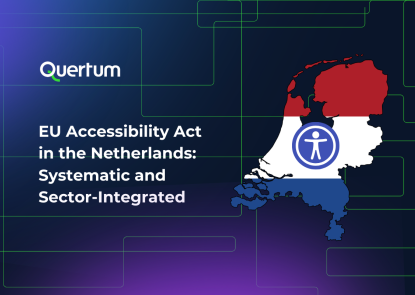Comparing TOP Customer Communication Management Systems. How to Choose a Modern CCM Platform That Actually Fits?
July 3, 2025

In our previous blog we discussed how legacy systems are slowing down modern business managers and here you are: realized the price for sticking to outdated systems and now it’s time to choose an efficient and clear CCM system. In this top CCM systems comparison, we’ll help you understand how to confidently choose the right modern communication platform that actually fits your business, without falling into the same traps that legacy systems create.
When you’re ready to migrate away from a legacy Customer Communication Management (CCM) platform, one thing becomes clear fast: there’s no shortage of options. From cloud-native innovators like Quadient or Smart Communications to heavyweight platforms like OpenText and Papyrus, each solution promises to improve efficiency, compliance and customer experience.
But picking the right CCM platform doesn’t merely include ticking off technical features. It’s also a strategic decision that shapes your agility, customer satisfaction and compliance readiness. This all factors will dictate you success for internal and external communications.
Here’s how to make that decision confidently.
Why Migrate at All – Fast Break Through
Just to refresh the information from the previous blog post, here is a brief review.
Legacy CCM systems are holding many businesses back. They’re often rigid, expensive to maintain, risky for long-play company development and difficult to adapt to new accessibility or data privacy laws. They also limit customer experience improvements – something today’s buyers increasingly expect.
Why it matters:
- Customers now expect more than just occasional personalization 73 % expect companies to truly understand their unique needs and preferences – a clear signal that every communication should feel connected and responsive
- Legacy systems can increase the cost and complexity of complying with new regulations like the European Accessibility Act (EAA) and GDPR.
- Modern CCM platforms offer cloud-based scalability, real-time communication and API-first architectures designed to grow with your business.
What to Look for in a Modern CCM Platform
When evaluating platforms, it helps to go beyond the product brochure and ask: What will this look like in action – in our business, with our processes and compliance requirements?
Here are six essential criteria:
- The right deployment model for your business
Cloud-native CCM platforms are growing rapidly due to their scalability, fast deployment and lower IT overhead. However, the right choice depends on your organizations’ reality. Highly regulated industries or businesses with complex legacy systems may still benefit from on-premise or hybrid deployments.
🧠 Our tip: Look for platforms that offer deployment flexibility without sacrificing modern capabilities like API access or low-code tooling.
- Omnichannel communication delivery
Modern customers expect a seamless experience whether they’re interacting via email, app, post, or portal. A good CCM platform enables you to design communications once and deliver them across all relevant channels, without duplicating work or causing formatting issues.
🧠 Our tip: Look for native support for print, web, SMS and mobile–plus responsive preview tools to test each format before sending.
- Ease of integration with existing systems
Your CCM solution doesn’t operate in a vacuum. It needs to connect with your CRMs, ERPs, archiving systems and sometimes even bespoke internal tools. Seamless integrations speed up implementation, reduce human error and help futureproof your stack.
🧠 Our tip: Prioritize platforms with pre-built connectors and open APIs, especially if you’re working in a multi-vendor IT environment.
- Compliance & accessibility readiness
The compliance bar is rising. From GDPR to the European Accessibility Act (EAA), your customer communications must be secure, traceable and usable by everyone including users with disabilities.
🧠 Our tip: Ask vendors whether their platform supports:
- Accessible document templates
- Real-time audit trails
- Role-based controls
- Automated compliance checks
- User experience for both your teams and end customers
It’s not enough for a platform to be powerful. It must also be usable by your content creators, legal reviewers, CX managers and other business stakeholders. A modern CCM tool should empower cross-functional teams, not bottleneck them behind IT.
🧠 Our tip: Look for role-based interfaces, drag-and-drop templates and approval workflows that allow collaboration without code.
- Vendor partnership & long-term fit
Technology is only a part of the equation. Migration support, training, roadmap transparency and service responsiveness all play a role in the success of your new CCM platform.
🧠 Our tip: Ask about post-sale support, local partner networks and how each vendor supports clients as business and compliance needs evolve.
Choosing the Best CCM System for Regulated Industries
Disclaimer: This top CCM systems comparison highlights that there is no one-size-fits-all solution. There’s no universally “best” CCM platform. Only the most suitable combination of tools, tactics, and collaboration conditions tailored to your organization’s needs.
Below, we’ve summarized four of the most widely adopted platforms in the CCM space. Each one has unique strengths, deployment models and ideal use cases.
Quadient Inspire
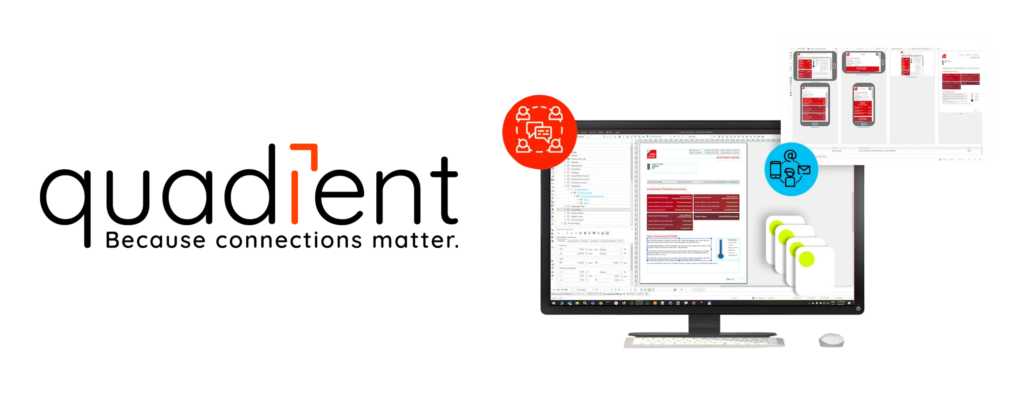
Quadient offers a strong balance between user-friendliness and enterprise-grade power.
For leadership teams, Quadient Inspire often signals a high-performing, long-term investment in communication architecture. It’s modular, highly customizable and integrates with a wide variety of systems.
CTOs and CIOs tend to appreciate its scalability and robust architecture, especially for organizations undergoing transformation or with plans to consolidate multi-channel communication systems.
It’s particularly well-suited for marketing-driven organizations thanks to its intuitive omnichannel composition tools, real-time previews and role-based interface that empowers business users without relying heavily on IT. It supports cloud-native and hybrid deployments, integrates seamlessly with CRMs like Salesforce and Microsoft Dynamics.
However, that power comes with a trade-off. The platform rewards those willing to develop or partner with skilled Quadient experts, turning what seems like complexity into a long-term differentiator. In this way, the early investment becomes a launchpad for sustained independence and strategic agility, which could serve for decades.
From a compliance perspective, Quadient Inspire is a solid bet. It offers granular control over messaging logic, audit trails and versioning, making it suitable for regulated industries such as banking and insurance. Legal teams often find comfort in its ability to document every step of a communication journey. Accessibility and auditability are built into its cloud capabilities, making it a right choice for organizations looking to futureproof compliance and UX.
The end user (i.e., your customer) usually never sees the complexity under the hood. What they do see, if Inspire is well implemented, is a hyper-personalized, consistent and timely communication experience across print, digital and mobile. That’s a major competitive advantage.
OpenText
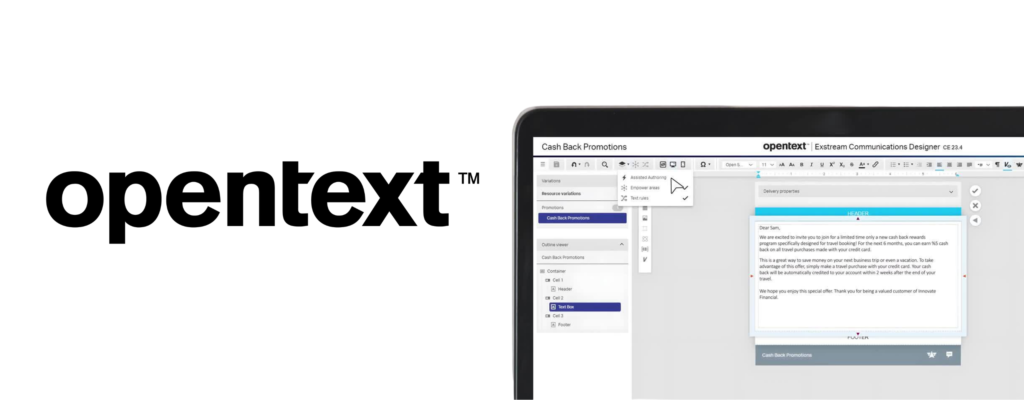
OpenText is often the default choice for institutions already embedded in the OpenText enterprise ecosystem which was widely adopted in the early 2000s to mid-2010s. It’s a heavyweight in the enterprise CCM space.
It appeals to leadership with its legacy of trust and stability, especially in large document-centric environments. CFOs often like the idea of extending existing OpenText investments rather than introducing a new vendor. Known for its robustness and deep legacy system support, it’s often the platform of choice for large organizations operating in highly regulated industries like insurance, utilities, or public sector. Its support for on-prem and hybrid deployments makes it appealing to businesses with strict infrastructure requirements.
Operationally, however, OpenText can be more rigid. Teams working within Exstream environments often report that configuration and development are IT-heavy, with limited room for rapid iteration by business teams. This creates a bottleneck when it comes to deploying and testing new communication strategies. Developers and analysts accustomed to agile, cloud-native environments may find OpenText slower and less flexible.
From a compliance perspective, OpenText holds up well, having been used across government and heavily regulated sectors for decades. Its DMS-centric infrastructure supports document retention, permissions and role-based controls in ways that appeal to risk-conscious legal and compliance departments.
The downside, especially from a user-experience and customer communications standpoint, is that modernization can lag. End customers may experience templated, static, or overly formal communications unless effort is made to layer on modern UX flows.
ISIS Papyrus
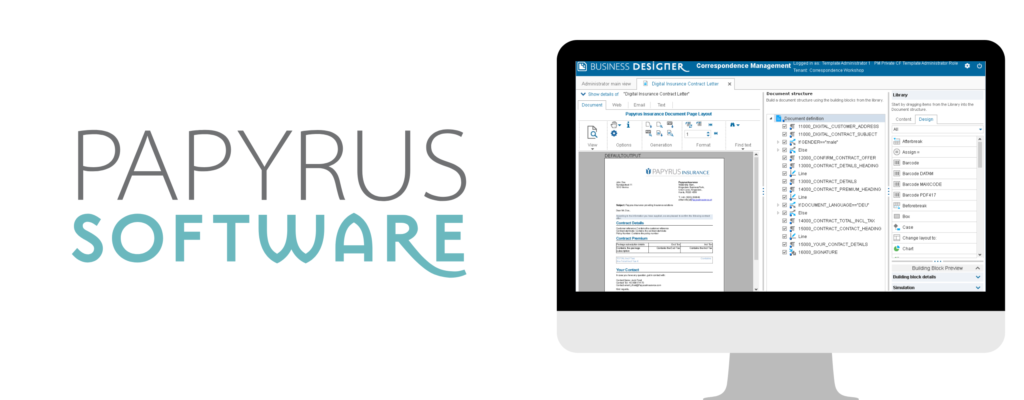
Papyrus is built for control and customization – they are unique in this approach. It’s a long-standing favorite in financial services, thanks to its strong governance features and configurable rule engines. The platform offers both on-prem and hybrid options, making it viable for compliance-focused environments. It’s less plug-and-play than others, typically requiring stronger in-house IT capabilities or external consultancy – but for organizations that value full control, the payoff can be substantial.
Papyrus offers a vertically integrated platform that combines process automation, document management, case handling and communications. For leadership and enterprise architects, this is attractive because it minimizes the number of vendors and integration points. Everything stays under one roof.
But this “all-in-one” strength is also a limitation. Unlike modular platforms, Papyrus expects the organization to adapt to its internal logic. This can create friction for teams used to flexibility or those wanting to plug in best-in-class solutions for analytics, templates, or content authoring.
Operational teams often find the Papyrus environment powerful but dense. Its steep learning curve and limited global user community make training and onboarding slower, especially for non-technical users. Developers will need to invest time to gain fluency in the system and business analysts will likely rely heavily on IT for changes. But would this learning time contribution worth ROI?
For compliance, Papyrus is a strong contender. Its end-to-end control of the communication lifecycle makes it well-suited for organizations with strict governance and risk standards. The ability to track and automate decisions across workflows is appealing to both legal and audit stakeholders.
Where it may fall short is in user experience. Communications generated through Papyrus can feel procedural and rigid. Without deliberate effort to improve design and personalization, end users might find interactions cold or bureaucratic—appropriate for some sectors but problematic for customer-centric brands.
Smart Communications
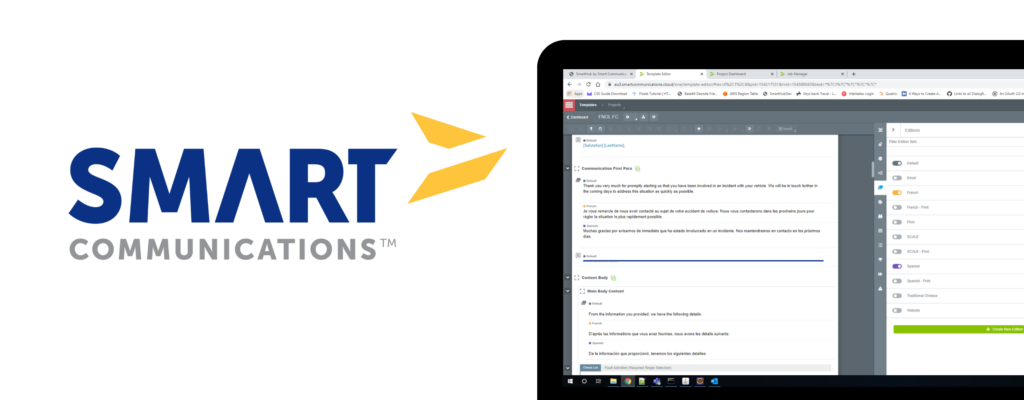
Smart Communications has carved its space by offering a cloud-native, API-first platform built with business users in mind. For leadership teams focused on agility, customer centricity and fast deployment, Smart delivers a compelling message. It removes much of the technical debt associated with traditional CCM implementations and is favored by organizations undergoing digital transformation.
From an operations and executive point of view, Smart is empowering. Business teams can create, test and deploy communications with minimal IT involvement. Analysts appreciate the real-time feedback loops and experimentation capabilities baked into the platform. Developers can focus on integrating backend logic while marketing and CX teams optimize messaging on the front lines.
Compliance teams will appreciate Smart’s modern cloud certifications, GDPR-ready architecture and policy-driven controls. While it may not have the on-premise legacy compliance layers of OpenText or ISYS Papyrus, its transparency and structured governance capabilities align well with evolving digital-first regulatory frameworks.
Most importantly, Smart Communications shines at the end-user level. It delivers clean, mobile-first and channel-consistent interactions that meet customers where they are—email, apps, chat, or print. Its omnichannel consistency, combined with tools for A/B testing and personalization, helps companies communicate more like agile digital-native brands and less like legacy enterprises.
However, this cloud agility comes with a trade-off: Smart isn’t built for deep backend complexity or legacy system entanglement. The platform may struggle with highly customized document logic, real-time transaction processing at enterprise scale, or legacy data dependencies. The consequence of this limitation can cascade throughout the organization. Strategically, leadership may find that while Smart accelerates time-to-value for customer touchpoints, it may not scale easily across all business-critical communication domains, especially those tied to regulated documents or high-volume transactional outputs. This can lead to fragmented ecosystems, where Smart handles digital comms while legacy systems still shoulder core workloads, undermining efforts to consolidate platforms and reduce complexity.
Prefer a quick side-by-side view?
Here’s a snapshot of the four platforms compared on deployment model, core strengths and business fit, to help you zoom in on the one that aligns with your goals.
| Platform | Deployment Options | Top Strengths | Top Weaknesses | Ideal For |
|---|---|---|---|---|
| Quadient Inspire | On-premises, hybrid and cloud | UX-focused, omnichannel tools, strong integrations | Steep learning curve on the beginning, could require expert setup | Marketing-driven orgs and mid-sized businesses looking to scale CX |
| OpenText | On-premises and hybrid | Enterprise-grade, legacy integration, regulatory trust | Slower modernization pace; heavy IT dependency; limited agility for digital-first use cases | Large, complex organisations with legacy-heavy infrastructure |
| Papyrus | On-premises and hybrid | Customisable, strong governance, used in finance | Steep learning curve; rigid architecture; low flexibility with third-party tools | Regulated industries with strong IT capacity and need for full control |
| Smart Communications (SmartCOMM) | Cloud-native | Agile, accessible, API-first | Limited backend depth; challenges with legacy system replacement; potential governance fragmentation at scale | Fast-growing companies prioritising flexibility, speed and CX innovation |
The 3 Questions to Ask Before You Decide
Before you lock into a platform, ask yourself and team:
- What do we want our CCM to enable in 2–3 years? Think about growth, new markets, digital transformation and CX goals.
- How much IT capacity do we really have for customisation and ongoing ownership? Some platforms require significant internal resources; others are built to be self-service.
- What regulatory, industry-specific, or accessibility requirements must we meet? Make sure the platform is prepared to support you before it becomes an issue.
Your CCM Should Grow With You
Modernising your CCM platform isn’t merely an infrastructure upgrade, it’s also a competitive strategy. Whether your focus is regulatory readiness, customer experience, or operational efficiency, the right platform should meet today’s needs while setting you up for tomorrow’s growth.
At Quertum, we work with organisations navigating these exact decisions. If you’re planning a CCM migration or exploring your options, we’re here to help guide the process, strategically and practically. The right platform won’t just solve today’s pain points, it should be a growth enabler, not a future constraint.
Explore our migration services or get in touch – we’d love to help solve your communication challenges.
Let’s drive your Digital Transformation Together.
Schedule a free consultation with our team to explore how we can help you achieve your goals.


